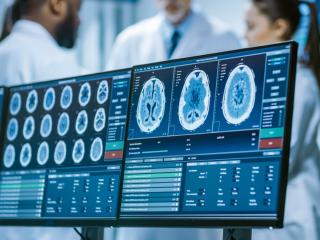Conformity assessment, brain computer interfaces and GPT-3
On Thursday, July 8th, 2021, the sixth edition of the TAISIG Talks took place. TAISIG is the Tilburg University Artificial Intelligence Special Interest Group: a research community committed to Artificial Intelligence (AI). Irene Kamara, Maryam Alimardani and Emiel Krahmer shared their insights.
Conformity assessment in the EU AI Regulation
Dr. Irene Kamara is researcher at Tilburg Institute for Law, Technology and Society. Her research focusses on conformity assessment and standardization in the areas of data protection, cybersecurity and non-discrimination. Conformity assessment is the demonstration that specified requirements are, or are not, fulfilled. It is applied to products, processes, services and persons. Law can for example require toys to be safe. Conformity assessment organizations define and specify what ‘safe’ means, in collaboration with the European Commission and other public regulators. Public law harvests and relies on information from private regulators and lawmakers. The new EU AI regulation proposal is actually based on laws from the ‘80s. Conformity assessment has a central role within the proposal, on which Irene elaborates in her talk.
Using Brain Computer Interfaces to understand the learning process
Dr. Maryam Alimardani conducts research surrounding brain computer interfaces (BCI). BCI are systems that collect brain activity recordings and use them to understand what the user is experiencing when performing tasks. By applying these systems, researchers can measure user intention, emotional status and cognitive status. Media usually shows BCI as invasive systems such as exoskeletons or surgically implanted electrodes. Maryams research differs from this as she uses a non-invasive BCI method. More concretely, she uses a wireless EEG cap or headset to measure brain activity. One of her research topics is neurofeedback and augmented learning. Currently, not a lot is known on the learning process and experience of users. In the video below Maryam explains what the benefits are of understanding the learning process and how BCI can be applied to measure it.
Problems and prospects of GPT-3
Prof.dr. Emiel Krahmer was trained as computational linguist at Tilburg University in the late ‘80s. Since then, his research focusses on data-to-text generation. These are systems that take data as input and generate a new, coherent narrative about it. In his talk Emiel addresses the problems and prospects of GPT-3, one of the breakthrough AI models of 2020 created by OpenAI. The basic principle of the GPT-3 model is word prediction. Most people are familiar with word prediction through WhatsApp. The difference is that WhatsApp makes a prediction based on one or two of the last used words. GPT-3 is a complex deep-learning model with 96 layers and takes large contexts into account when making predictions. This complexity aids the creation of coherent texts, but the texts are not based on reality and contain facts that are not true.



